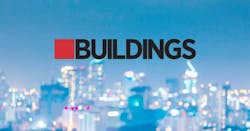3 Metering Tips for New Facilities Managers
For new facilities managers, energy management can come with a steep learning curve. It can take years to truly master your facility’s energy spending, but if you’ve just started helping out with energy metering and monitoring, here are three good places to start.
1. Understand what your building should be using.
Compare your building against historical data (if you have it) or against other similar buildings in your area. Use ENERGY STAR’s Portfolio Manager (portfoliomanager.energystar.gov) to see how you’re doing relative to other buildings. Even if your building isn’t eligible for ENERGY STAR certification, the tracking tools it provides can help new facilities managers get a handle on their building’s energy consumption (as well as water and waste).
“The more data you’ve got, the more you can do with it,” explains Kevin Brown, vice president of engineering for ABM, a facility solutions provider. “Portfolio Manager makes it easier to see where you are in comparison.”
If you’re overseeing a portfolio of buildings, you can also compare similar buildings within your portfolio by energy spending per square foot or ENERGY STAR scores. This is especially helpful if your portfolio has many similar buildings, like restaurant chains or retail stores.
“If everybody’s in range except three places that are running extremely high [with energy use], that shows where you have to take action,” says Rick Goetz, vice president of operations and service delivery leader for ABM.
2. Invest in analytics.
Your utility bill won’t give you the level of granularity you need to get a handle on your energy spending. You need to be able to look at your consumption as it’s happening. Some monitoring products can give you data in near real time. Whichever analytics package you invest in should let you look at trends over time for things like equipment runtimes, as well as alert you to spikes in usage.
“One thing we’ve done with a couple of jobs is adding energy dashboards to the lobby of the building,” Goetz says. “It shows a red, yellow and green speedometer. Let’s say it’s a hot day and everybody’s cranking the temperature down—the energy usage is going to go up, so it will be in the red and then the energy manager can figure out how to dial that back.”
3. Understand your utility rate.
Utilities often have demand charges based on your highest amount of energy usage. Flattening that peak can greatly reduce costs. Metering can help you understand when and where the spikes are happening.
“As an example, in a warehouse facility you might have electric forklifts you charge throughout the day,” Goetz says. “In Atlanta at 2:30 in the afternoon in the summer, all of the air conditioning is running. If the forklift chargers are plugged in as well, now you’ve got this huge demand on the utility, so you’re going to get a higher peak demand. If you think about it, you can maybe turn on your chargers at 5 [p.m.] when the air conditioner’s not running as much so you don’t get that high number.”
“That’s the value of information,” Brown adds. “Being able to turn kWh into dollars is huge. Metering tells you where it’s going.”
Read next:
About the Author
Janelle Penny
Editor-in-Chief at BUILDINGS
Janelle Penny has been with BUILDINGS since 2010. She is a two-time FOLIO: Eddie award winner who aims to deliver practical, actionable content for building owners and facilities professionals.

